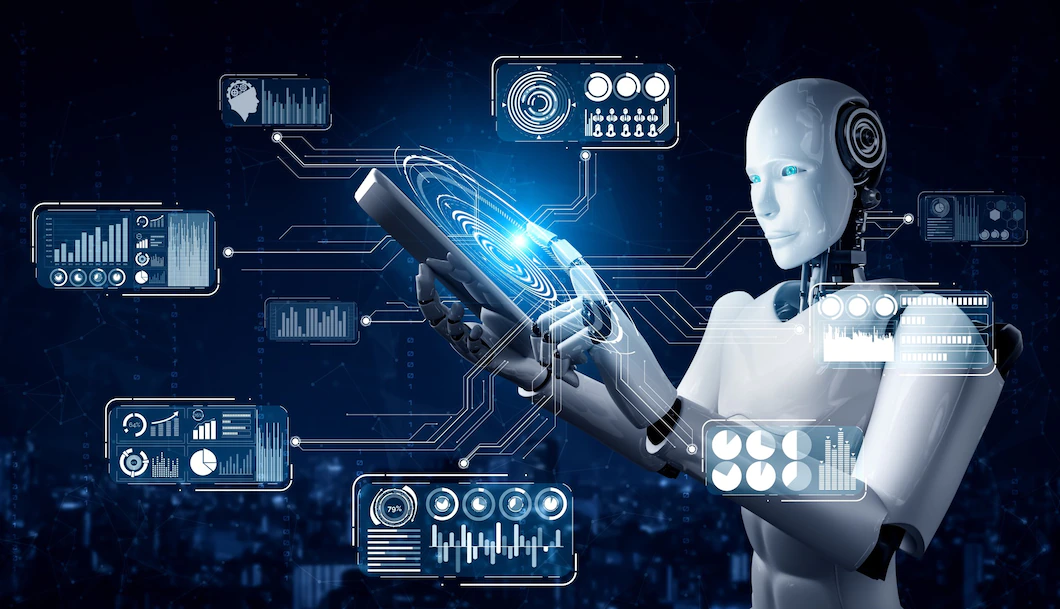As blockchain and artificial intelligence (AI) continue to evolve, their convergence is giving rise to a new technological paradigm: autonomous yet transparent digital ecosystems. Blockchain promises decentralization and trust through transparency, while AI offers automation and intelligence through self-learning systems. But when these two forces collide, an important question arises — how do we balance …
Balancing Transparency and Autonomy in AI-Driven Blockchains

As blockchain and artificial intelligence (AI) continue to evolve, their convergence is giving rise to a new technological paradigm: autonomous yet transparent digital ecosystems. Blockchain promises decentralization and trust through transparency, while AI offers automation and intelligence through self-learning systems. But when these two forces collide, an important question arises — how do we balance autonomy with accountability?
The pursuit of AI-driven blockchains represents one of the most fascinating challenges in modern technology: creating systems that can think for themselves while still being open, auditable, and fair.
The Power Duo: Why AI and Blockchain Are Merging
Blockchain and AI are often seen as complementary opposites. Blockchain is deterministic—its rules are clear, auditable, and recorded on a public ledger. AI, on the other hand, thrives on uncertainty—it learns patterns from vast, often opaque datasets, producing outcomes that may be difficult to explain.
When you merge them, you get systems that are not only secure and decentralized but also capable of autonomous decision-making. From AI-driven trading platforms to self-regulating DeFi protocols, this synergy is reshaping the foundations of digital infrastructure.
Imagine a decentralized network that learns from user behavior, detects threats in real-time, optimizes transactions, and evolves without human intervention. This is the promise—and the dilemma—of AI-driven blockchains.
Transparency: The Cornerstone of Blockchain
Transparency is the heartbeat of blockchain technology. Every transaction, contract, and protocol action is verifiable on the ledger. This openness ensures trust without intermediaries, a key reason why blockchain gained traction in the first place.
But transparency comes at a cost—especially when integrated with AI.
AI algorithms often depend on large datasets, many of which contain sensitive or proprietary information. Publishing such data on a transparent ledger could violate user privacy or expose strategic insights. Furthermore, the internal workings of AI—how it makes decisions—can be inherently opaque, especially in complex models like deep neural networks.
Thus, we find ourselves at a paradox: blockchain demands openness, while AI often operates best in a black box.
Autonomy: The Promise of Intelligent Decentralization
Autonomy is what gives AI-driven blockchains their revolutionary edge. Through machine learning, these systems can adapt to changing environments, make decisions without human intervention, and optimize operations in real time.
Consider AI-powered smart contracts that adjust token supply based on demand, or autonomous governance models where algorithms evaluate and execute proposals automatically. These innovations move us closer to self-sustaining ecosystems—decentralized networks that can manage themselves efficiently.
However, autonomy without oversight can be dangerous. A fully autonomous blockchain might act rationally according to its code, but irrationally according to human ethics or intent. Without proper transparency, it becomes impossible to hold such systems accountable.
This creates a fundamental tension: too much autonomy, and we risk losing control; too much transparency, and we risk losing privacy and adaptability.
The Balancing Act: Trust, Explainability, and Control
Finding equilibrium between transparency and autonomy requires rethinking how we design both AI systems and blockchains.
One emerging approach is “explainable AI” (XAI) — a movement focused on making AI’s decision-making processes interpretable. When paired with blockchain’s auditability, XAI could allow for systems where every AI action is not only logged but also explained in human-understandable terms.
For example:
- If an AI-driven DeFi protocol changes lending rates, blockchain records the change.
- XAI mechanisms provide reasoning: the system detected rising liquidity risk or declining collateral ratios.
This combination ensures both visibility and comprehension—users not only see what happened but understand why.
Another promising direction is selective transparency, where cryptographic tools like zero-knowledge proofs (ZKPs) enable data validation without revealing underlying details. In essence, users can verify the correctness of an AI’s action without seeing its full dataset or model structure.
Decentralized AI: Democratizing Intelligence
Decentralized AI networks, such as SingularityNET, Ocean Protocol, and Fetch.ai, are pioneering the next generation of autonomous yet transparent systems. These platforms allow AI agents to operate on blockchain infrastructure, sharing data and resources securely while maintaining traceability.
The idea is simple but powerful: intelligence should not belong to a single corporation or government—it should be distributed. Each AI agent contributes to a global network of learning, governed by transparent blockchain protocols that prevent manipulation.
By decentralizing both data and decision-making, these systems reduce bias, prevent monopolies, and ensure that AI autonomy remains accountable to the community.
Privacy vs. Transparency: The Data Dilemma
At the heart of this balance lies data governance. AI needs data to learn, while blockchain makes data immutable and public. The challenge is preserving user privacy without sacrificing the benefits of openness.
Enter privacy-preserving computation — a set of techniques that include homomorphic encryption, federated learning, and ZKPs.
- Federated learning allows AI models to train across multiple datasets without moving the data itself—keeping sensitive information private while still enabling learning.
- Homomorphic encryption lets computations happen on encrypted data, ensuring privacy even during processing.
- Zero-knowledge proofs confirm an action’s validity without exposing the inputs behind it.
These advances make it possible to build AI-driven blockchains that are both private and provable, creating a bridge between transparency and autonomy.
Ethical and Regulatory Considerations
As these hybrid systems gain traction, questions of responsibility and governance become increasingly urgent. If an autonomous blockchain makes a decision that causes financial loss or violates ethical norms, who is to blame—the developer, the node operator, or the algorithm itself?
Regulators are only beginning to grapple with such issues. The European Union’s AI Act and various emerging crypto frameworks aim to define boundaries for algorithmic accountability. Yet, applying traditional oversight models to decentralized AI systems remains complex.
A possible solution lies in algorithmic governance — embedding ethical rules and transparency standards directly into blockchain protocols. In other words, instead of regulating after the fact, we build compliance into the code.
Africa’s Opportunity in Transparent AI Systems
Africa’s fast-growing blockchain ecosystem presents a unique opportunity to build transparent AI systems from the ground up. With a youthful population, increasing mobile penetration, and a vibrant startup culture, the continent can leapfrog older, centralized models.
AI-driven blockchains could be used to:
- Manage digital identity securely and transparently.
- Create autonomous microfinance platforms governed by smart contracts.
- Power decentralized data markets where users control their own data.
By embedding transparency and accountability into emerging AI applications, African innovators can establish new global standards for ethical, inclusive technology.
The Future: Autonomous, Accountable, and Aligned
The fusion of AI and blockchain is not just about automation—it’s about alignment. True innovation lies in building systems that act intelligently without losing the transparency that earns human trust.
In the future, AI-driven blockchains could:
- Explain every decision they make through on-chain reasoning systems.
- Self-regulate to prevent misuse or unethical behavior.
- Balance privacy and openness through encrypted transparency.
This vision represents a new era of autonomous accountability, where systems don’t just obey rules—they understand them.
Conclusion: The Human in the Loop
As much as we celebrate autonomy, transparency reminds us of the human values underpinning technology—trust, fairness, and accountability. AI-driven blockchains should not replace human judgment but enhance it, ensuring that every algorithmic decision remains traceable and justifiable.
The future of AI and blockchain lies not in choosing between transparency or autonomy, but in harmonizing both. Because in a world where machines can think, it’s our shared responsibility to make sure they think ethically, openly, and wisely.








